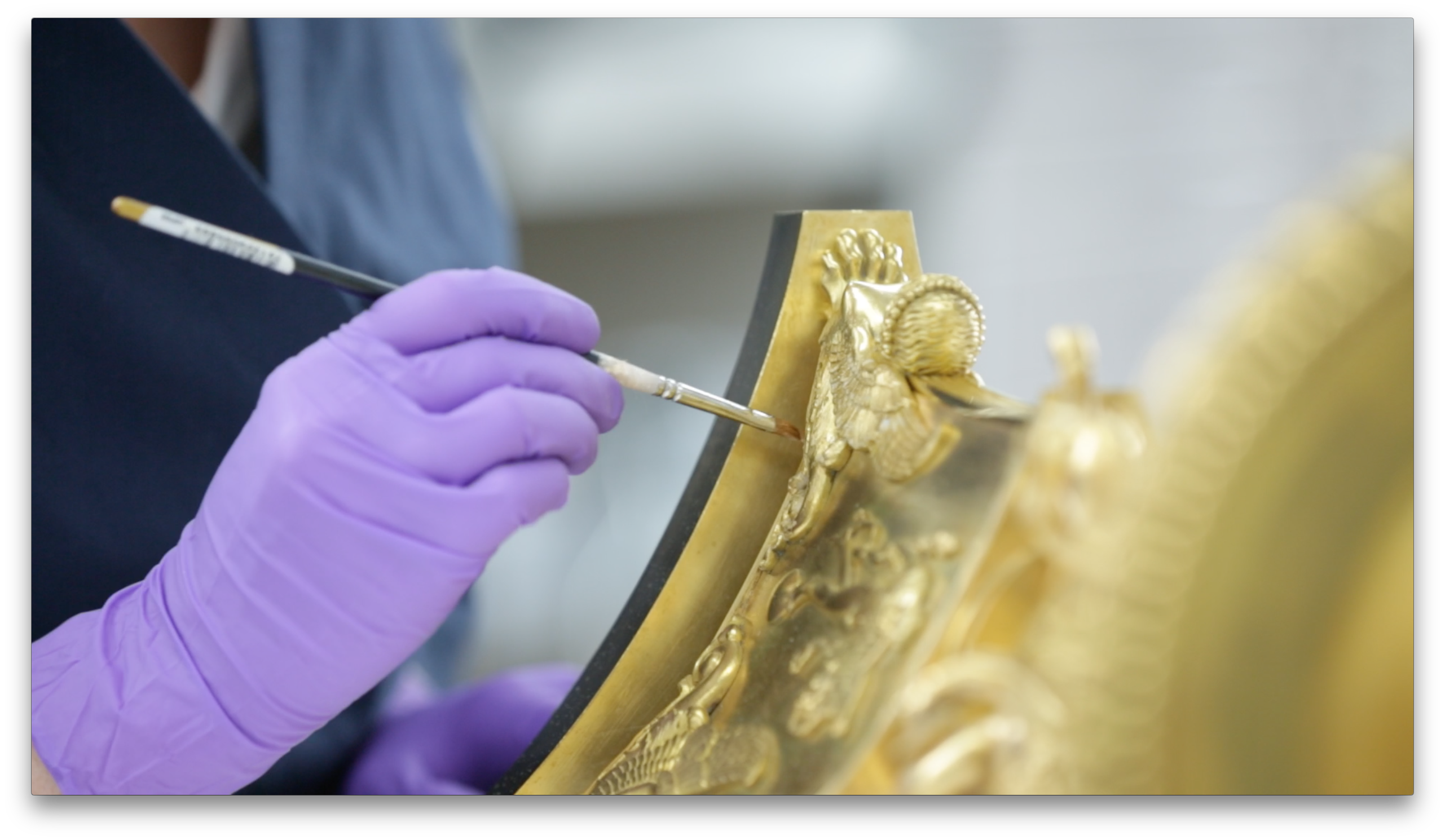Sarah Barack, Cooper Hewitt’s new Head of Conservation and Senior Objects Conservator, has extensive experience in conservation treatment, project management, teaching, and research. Her passion for conservation, education, and outreach, combined with her object treatments that span archaeological ceramics to historic silver objects, Chinese porcelain to 20th-century Plexiglas reliefs, make her an ideal addition to the museum’s staff.

Cooper Hewitt’s permanent collection includes more than 210,000 objects, which together span thirty centuries and reflect cultures from around the world. The Conservation Department’s main responsibility is the care and technical study of these pieces, to ensure their preservation for today and into the future. Founding conservator Lucy Commoner established the department in 1977 and, over the years until her recent retirement, her dedication and vision facilitated its growth into a robust and active team of four conservators. I am thrilled to have the opportunity to take the helm from Lucy as Head of Conservation, and to work alongside talented colleagues both at the museum proper and at our offsite collections storage and laboratory in New Jersey.
By working together, our team provides deep expertise in the conservation of works on paper, textiles, and three-dimensional objects made of media ranging from brittle glass to pliable plastic and everything in between. We work to support curatorial priorities and exhibition plans, which may include repairing damage to collection items (known as a “conservation treatment”), identifying materials and their manufacture or previous repairs, or preparing objects and mounts prior to display or travel. We also monitor the galleries and storage spaces to make sure the climate surrounding the collections is appropriate and stable. Recent grant awards from the Smithsonian will greatly expand the department’s capabilities to both study the collections through specialized imaging techniques and optimize collections care through the creation of custom supports for particularly delicate jewelry and glass vessels. A grant from the Smithsonian Women’s Committee will allow for the treatment of an important, ten-foot-long, nineteenth-century surtout de table (an ornamental centerpiece placed in the middle of a formal dining table). This piece was a highlight of the exhibition Tablescapes: Designs for Dining on view at Cooper Hewitt October 2018–April 2019.
Our department also works to set best practices around access to the collections for all visitors, whether first-time museumgoers or advanced research scholars. We provide guidelines for display to ensure that objects are sufficiently lit, but that sensitive media like paper or textiles—which might fade or darken/discolor following exposure to light—are not damaged. Our guidelines also protect items not placed within vitrines from damage due to handling. We recently expanded our public communication to include an Instagram account to facilitate access to those who live far away or are unable to visit the museum in person. This channel focuses on our projects and provides a behind-the-scenes peek into life in the lab. As a team, we have adapted various strategies to balance this goal of wider access with preservation concerns.
One thought on “Life in the Lab: Conservation at Cooper Hewitt”
mariagarvalm on October 30, 2020 at 7:30 am
Preservation projects on the role that objects play from the screen to their three-dimensional lighting.
“Radical and inspiring … Yanagi’s vision puts the connection between heart and hand before t https://www.penguin.co.uk/books/311112/the-beauty-of-everyday-things/9780241366356.html